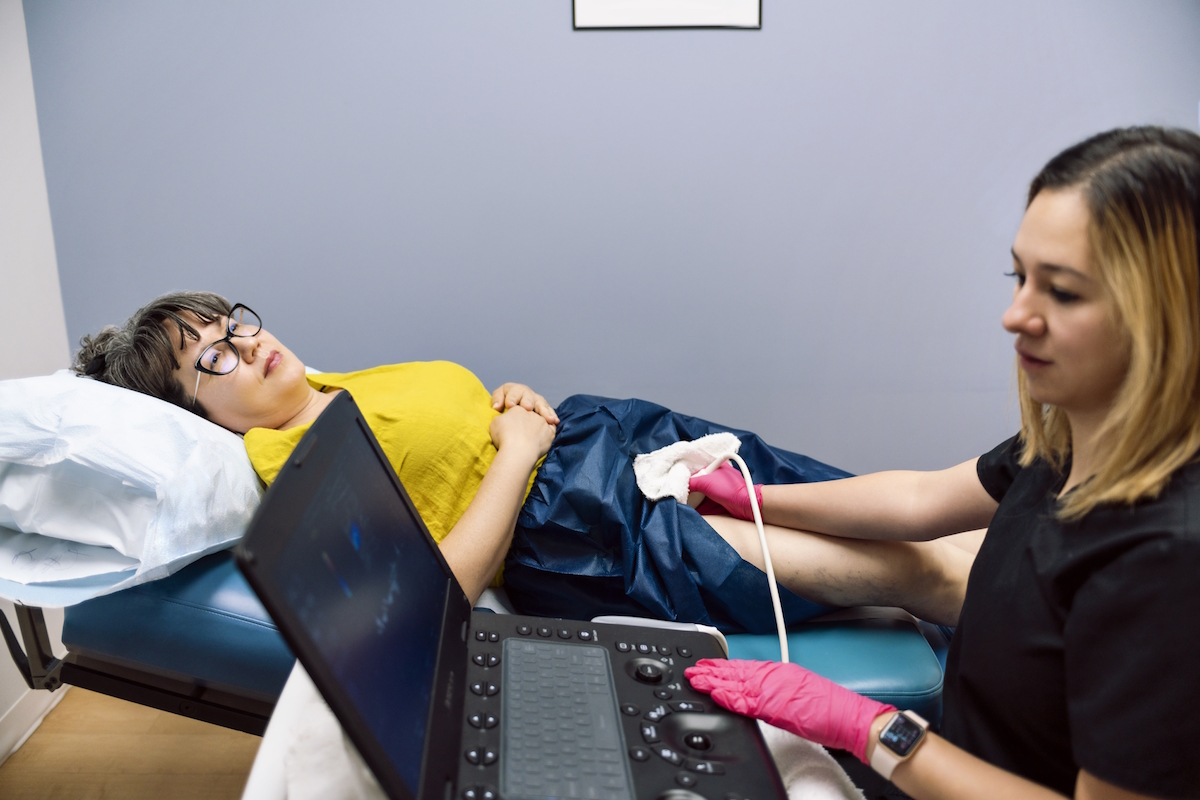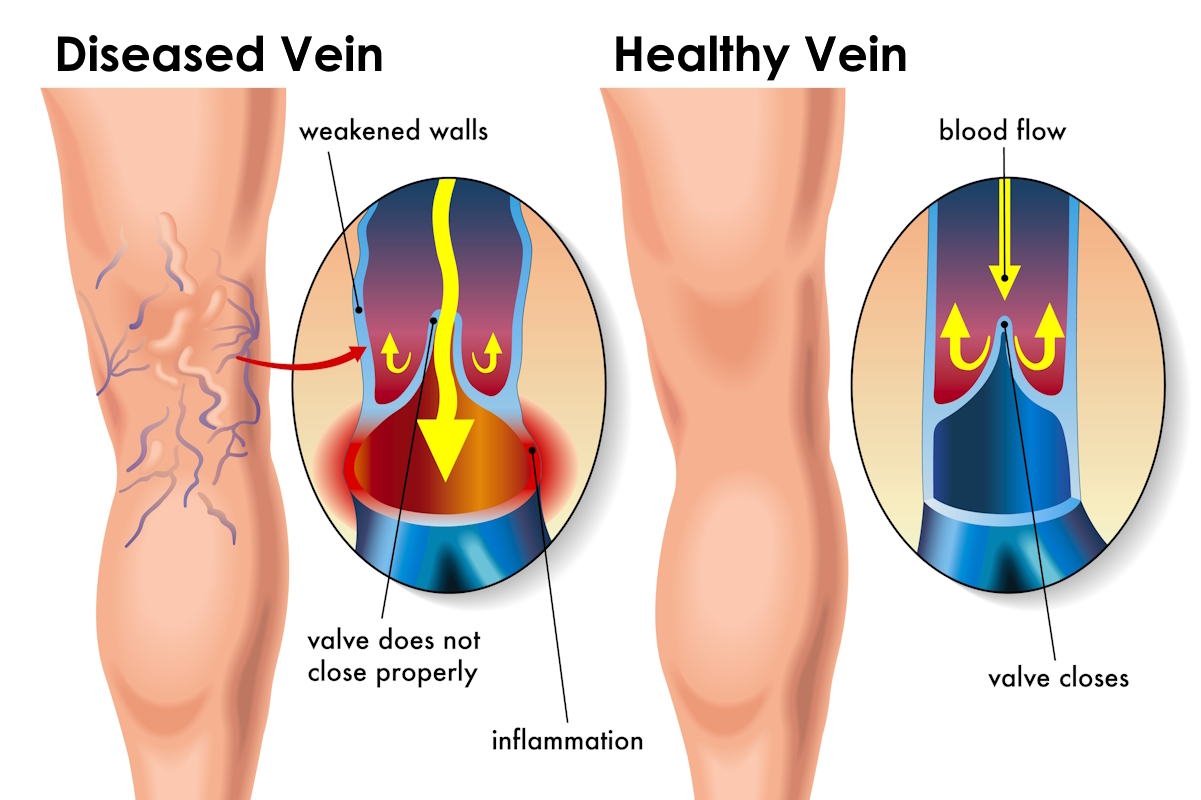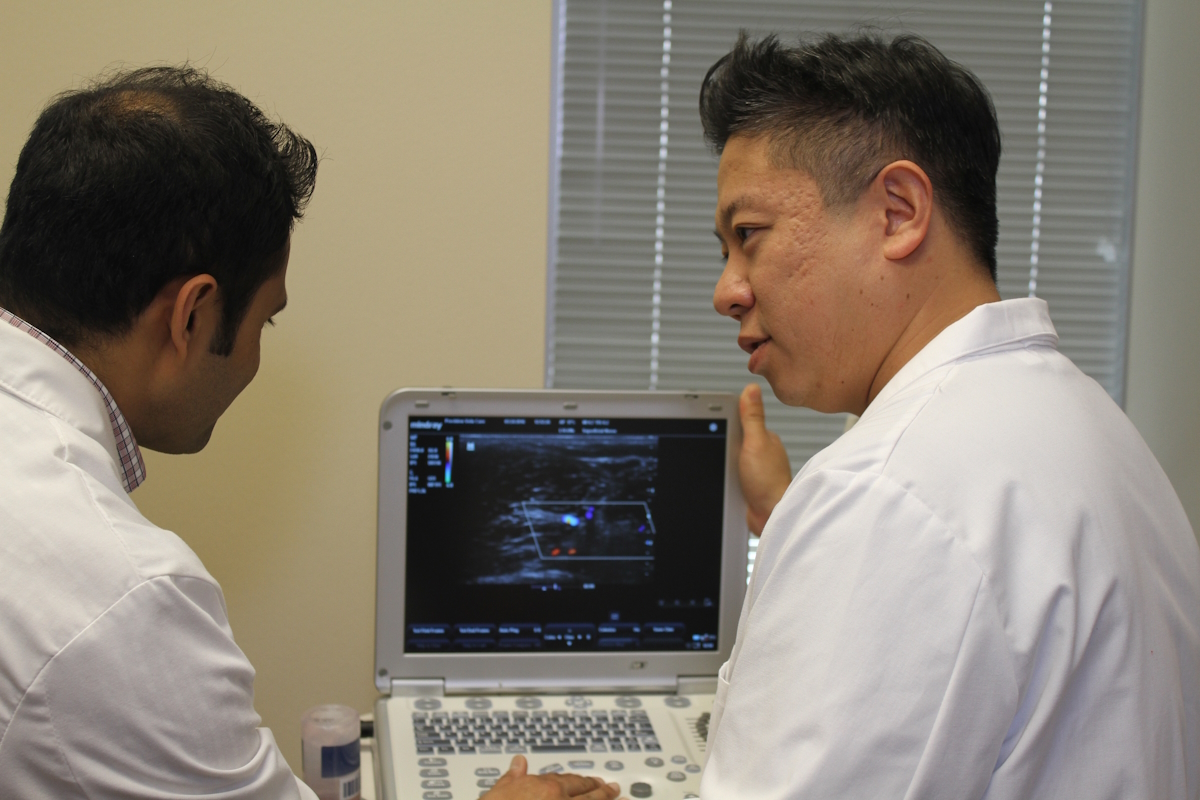The Power of Ultrasound in Early Detection of Venous Insufficiency: Why Timing Matters
Author: StrideCare Internal Team

One of Sue’s favorite things to do each morning is walk her grandchildren to school. She has done this religiously since her daughter and son-in-law accepted new jobs three years ago that require them to leave early in the morning—well before the kids start their day. The problem is that over the past few months, Sue has been struggling with persistent leg pain that is worsening by the day. This includes everything from swelling to feeling that her legs are too tired and heavy to move. By the time she gets the kids to school, walking the short trip home takes her longer to complete. Frustrated and worried, Sue* finally sought help from our team at StrideCare, where she was diagnosed with venous insufficiency—a condition that causes the veins in the legs to struggle to return blood to the heart.
Sue was amazed at the quick diagnosis, aided by a simple yet powerful diagnostic tool: venous doppler ultrasound. In no time, her doctors had a clear image of Sue’s veins and could then map out a personalized treatment plan to get her back to enjoying those morning walks with the grandkids. With October being Medical Ultrasound Awareness Month, sharing this story is revenant as a way to shine a light on the role ultrasound technology plays in diagnosing and managing vein disease, including venous insufficiency.
At StrideCare, we believe timing matters for successful results. Venous Doppler Ultrasound is a non-invasive, imaging tool that helps us ensure patients receive the highest standard of care and can avoid the risk of further complications.
Do Any of These Symptoms Sound Familiar?
- Feelings of achiness
- Visible spider veins or varicose veins
- Heaviness or fullness in your legs
- Burning, throbbing, itching, and swelling
- Skin discoloration
- Restless legs
- Cold legs
- Muscle cramps
- Numb legs
- Discomfort when sitting or standing
- Bruising
Wondering if your symptoms are due to vein disease or venous insufficiency? Schedule a consultation with a StrideCare vascular specialist today. Our collaborative approach ensures you receive the care you need.
What Is Venous Insufficiency?
If you are on the fence about venous doppler ultrasound, consider the signs and symptoms you might be experiencing and the importance of early detection. An average of one in every three adults over 45 develops some form of vein disease, which can include symptoms ranging from tired and heavy legs to any of the symptoms mentioned above. This is because the valves in our veins start to weaken, slow down and fill up with blood. As a result, our veins enlarge or swell due to fluid buildup.

Typically, the first signs of problems are unsightly, thin, thread-like red or blue lines along the skin called spider veins. Eventually, people can develop varicose veins, and if they do not visit a doctor, the appearance and symptoms may worsen over time. This can lead to severe complications like chronic venous insufficiency.
Chronic venous insufficiency is when blood pressure builds up in the lower legs. It can cause painful symptoms ranging from swelling and a heavy, full feeling in the legs to drastic skin changes that could lead to open sores and ulcers on the legs, feet, or ankles.
You are more likely to experience venous insufficiency if you meet one of these risk factors:
- Overweight — Excess weight places additional stress on the circulatory system. This causes veins to work harder than usual to push blood throughout the body, damaging veins and valves.
- Current or past pregnancies — Being pregnant is a beautiful time in a woman’s life. That said, pregnancy can lead to venous insufficiency. This is for various reasons, including the fact that a pregnant woman’s body naturally produces more blood, which leads to excess strain on vein valves and walls. Hormonal changes are also a factor, as is weight gain and pressure from the uterus.
- Sedentary lifestyle — One-third of the global population over age 15 does not engage in enough physical activity, which affects health. The obvious risks of a sedentary life include weight gain, fatigue, and even anxiety.
- Smoking — Smoking, in general, is not good for you and is the leading cause of preventable disease and death in the United States, per the Centers for Disease Control and Prevention. This includes its direct impact on the formation of varicose veins and other venous diseases and complications.
- Family history — Hereditary factors primarily cause vein disease, including venous insufficiency. Therefore, if mom, dad, and grandma all have varicose veins or even a history of blood clots, you are predisposed. In fact, statistics show that roughly half of all varicose vein patients have a family history of vein disease.

You do not have to suffer from vein disease. Schedule a consultation with StrideCare’s expert physicians at one of our vein clinics near you.
Ultrasound Technology: A Faster Diagnosis of Venous Insufficiency
Early detection is vital in treating any vein disease, including venous insufficiency. Venous doppler ultrasound is a noninvasive, nonsurgical, and painless medical test and is typically one of the first tests a patient will undergo. With doppler ultrasound, a small transducer probe emits high-frequency sound waves to take a detailed picture of the circulatory system and vein structures. As the probe passes over the lower extremities, a computer creates a detailed image of what it sees and detects in real-time.
The ultrasound images show several key elements, including the starting and end points of each vein, areas where there is a clear narrowing of vessels, changes in the appearance of tissues, abnormal masses, blood clots, potential blockages, current vein function, and the cause of long-standing swelling. Your doctor can then analyze this information and determine your current circulatory health.
During your venous doppler ultrasound, you may be asked to wear comfortable and loose-fitting clothing that is easy to remove. Before the screening begins, a provider will apply a small amount of gel to the skin to better help the ultrasound glide over your diagnostic area. The entire process typically takes 45-60 minutes to complete.
While the ultrasound is taking place, as a patient you can sit back and relax. A few additional benefits include:
- Painless (no needles or injections)
- No need for radiation
- Check for a variety of vein diseases and conditions
- No downtime or recovery period
- Widely available, easy to use, and a less-expensive testing option
- Little to no special preparation is required
- Covered by most medical insurance

Venous doppler ultrasound imaging is the frontline tool for identifying venous insufficiency. That said, it does more than confirm a diagnosis. It also allows our specialists to tailor treatment plans to your unique needs. After all, no two cases of venous insufficiency are identical. Our doctors must consider blood flow patterns, the extent of valve and vein dysfunction, vein size, the symptoms you are experiencing, the precise location of pain, and more.
To aid in this process, it is sometimes necessary to perform venography as a follow-up vein screening to uncover problems with veins that venous ultrasound cannot view. With venography, the provider will inject an iodine-based solution into the veins to act as a contrast that can be seen easily on an X-ray. This allows doctors to get a complete view of your veins without following up on inconclusive ultrasound findings.
Trust StrideCare With Your Venous Ultrasound and Early Detection
Venous doppler ultrasound as a diagnostic tool for venous insufficiency is an easy, quick, non-invasive, and non-surgical way to determine what may be wrong with your legs and feet quickly. This is especially true if you are in pain. This is clear evidence that a problem exists. If left untreated, vein diseases such as these can cause severe and life-altering complications. Ultrasounds are designed to get ahead of these conditions and allow you and your doctor to create a viable treatment plan that will enable you to get back on your feet quicker.
StrideCare has long been a leader in multi-specialty care for treating lower-extremity vascular and podiatric conditions. That includes our ability to perform leading-edge procedures to treat artery and vein disease and symptoms that, while minor in their earliest stages, can eventually lead to more serious and life interrupting issues. The experts at StrideCare will recommend an individualized plan to help you get the best results.
Please contact us at 866-552-4866 or complete the appointment form to schedule a consultation. We are here to help, all while providing compassionate patient care.
This information is not a substitute for professional medical advice. Prior to starting any new treatment or questions regarding a medical condition, always seek the advice of your doctor or other qualified health provider.
StrideCare serves North Texas and South Texas communities, including Sherman, South Dallas, Southlake, Stone Oak, Sugar Land, Sulphur Springs, The Woodlands, Waxahachie, Webster, Addison, Allen, Anna, Arlington, Austin, Carrollton, Celina, Clear Lake, Craig Ranch, Dallas, Euless, Flower Mound, Forney, Fort Worth, Frisco, Garland, Houston, Irving, Katy, Kaufman, Mansfield, McKinney, Mesquite, Midland, North Dallas, Odessa, Paris, Pecos, Plano, Prosper, Rockwall, Round Rock, Rowlett, Royce City, San Antonio, and more.
*Patient names and/or photos may be changed to protect patient confidentiality.


